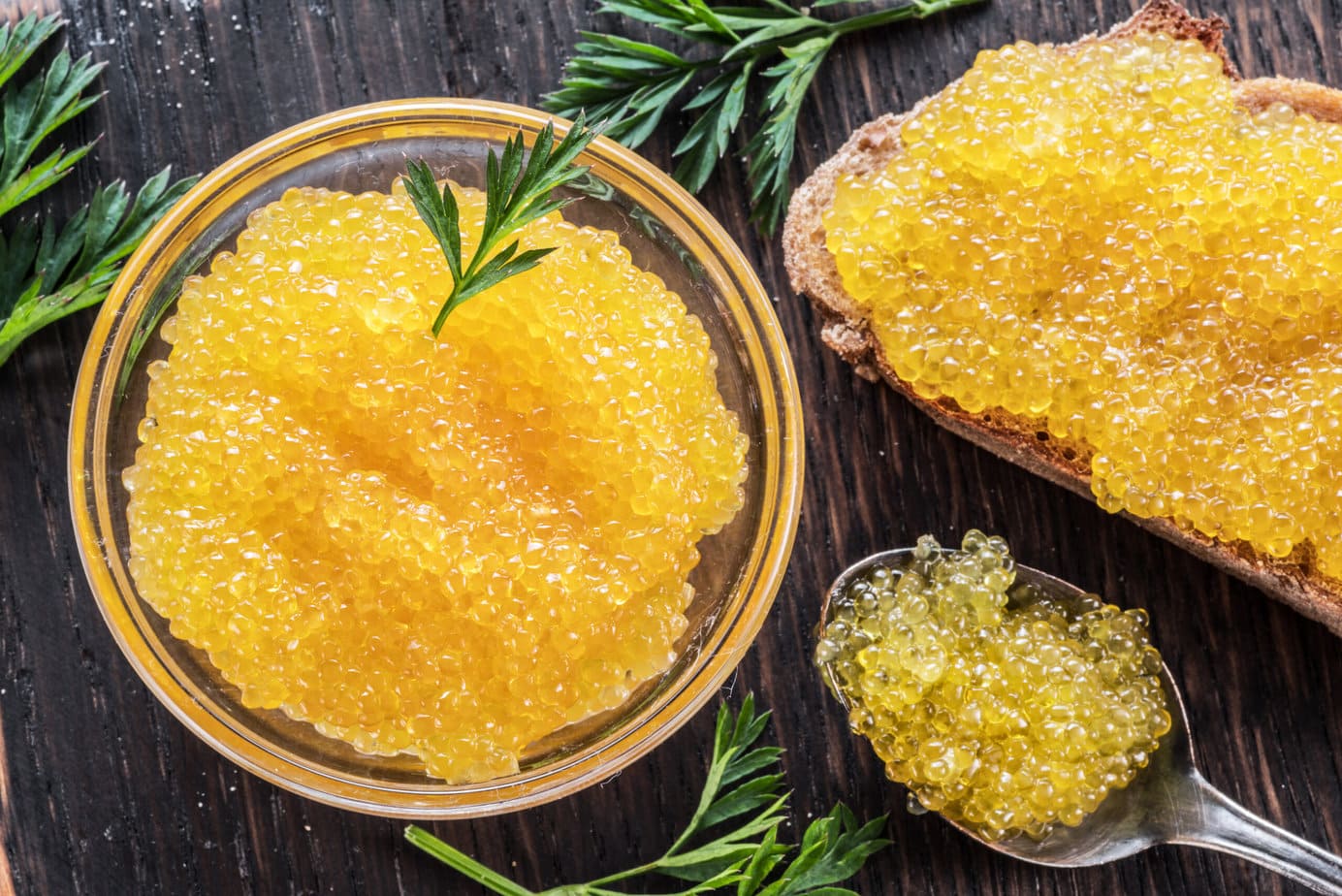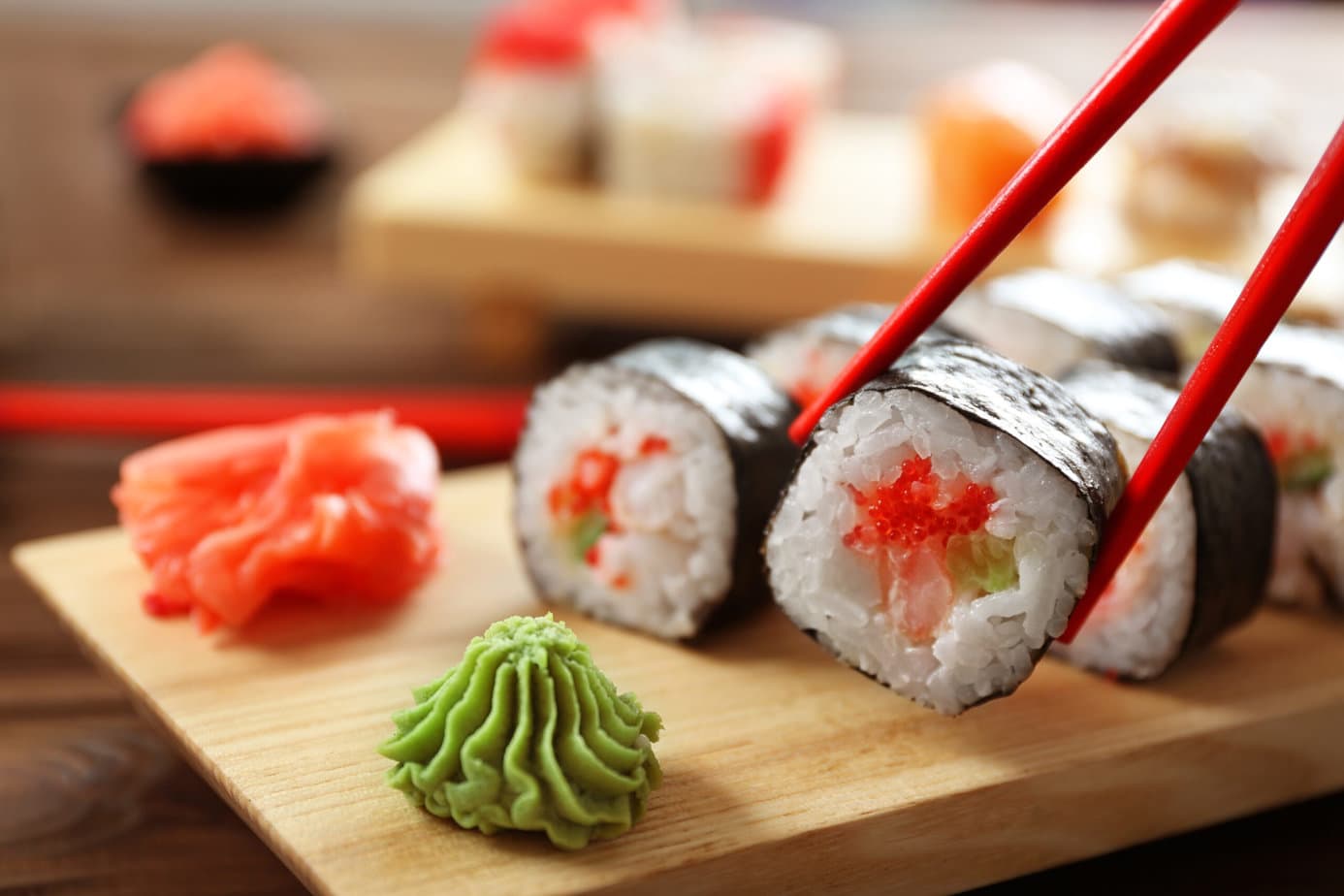What is capelin roe?
Capelin is a small fish that lives in the cold waters of the Atlantic, Pacific, and Arctic Oceans, especially off the coasts of Japan and Korea. So, you probably won’t see it around here, and the name might not mean much to you.

In Asian cuisine, capelin roe is the part that’s most often used. While the fish itself is edible, the roe is a more popular ingredient and is in high demand.
Just like with sturgeon, salmon, or herring, capelin roe is harvested from the female and then processed and sold as “masago.” Although most capelin fishing is for fish meal and fish oil, it’s also used to produce masago.
Masago vs. tobiko: what’s the difference?
When people talk about masago, tobiko often comes up too. They’re actually good substitutes for each other. Both are rich in selenium, omega-3 fatty acids, and vitamin B12. Still, there are a few differences to note, starting with color and taste.
When harvested, tobiko is golden, while masago is pale yellow. Producers usually add coloring at the end of processing, but sometimes these colors hint at different flavors. Another key point: tobiko comes from flying fish, while masago is from capelin. Masago is said to have a finer texture, while tobiko is crunchier.

What does capelin roe taste like?
To give you an idea, capelin tastes a lot like herring. Its roe has a mild flavor, which is why it’s often paired with bolder tastes in Asian cooking, like wasabi or squid ink.
Masago has an interesting texture—more delicate than tobiko, but still a little crunchy. The only downside: it’s a staple in Japanese cuisine, so be prepared to pay a bit more for it!
How to use capelin roe in cooking
Whether you add it to dishes or sauces, capelin roe brings a complex note to your plate. Since it has a distinctive taste, I recommend pairing it with strong flavors like ginger. Try out different combinations and you’ll discover the magic of umami!

Masago also works well as an appetizer, spread on toast. Spring rolls and rice dishes are also great ways to use the roe. Try making a wasabi-masago mayo—it’s a perfect match for fish dishes and salads.
Health benefits of capelin roe
This is one of the healthiest foods you can eat. Just two tablespoons of capelin roe provide all the nutrients your body needs. It’s a great source of healthy fats and protein, which help maintain lean muscle, protect against cognitive and neurodegenerative diseases, strengthen your immune system, and support cell renewal.
Plus, it’s very low in calories. Still, you should enjoy it in moderation—capelin roe is high in salt, so be sure to stick to the recommended serving sizes.
Where can you find capelin roe?
It’s pretty easy to find in Asian markets, so you’ll naturally come across it in specialty grocery stores or online. Capelin roe is sold canned or semi-preserved. Don’t judge its freshness by color: the roe is naturally yellow, but it’s usually sold in orange-red or black.
How do you store capelin roe?
This is a very delicate product that should be kept away from light. Store it in your refrigerator for best results. Always check the expiration date on the jar.

Equipment
Ingredients
- 140 g sushi rice cooked, seasoned, and chilled
- 1 nori sheet
- 0.5 avocado thinly sliced
- 100 g masago or capelin roe
Instructions
- Lay the nori sheet on the bamboo mat with the long side facing you.1 nori sheet
- Spread a thin, even layer of sushi rice, leaving a small margin along the long edges.140 g sushi rice
- Arrange the avocado in a line from end to end, about 1.5 cm from the edge closest to you.0.5 avocado
- Using the mat, start rolling from the edge closest to you.
- Tighten the roll firmly, then slice into individual maki.
- Top each maki with a small spoonful of masago.100 g masago or capelin roe
- Alternatively, add the masago inside before rolling.

